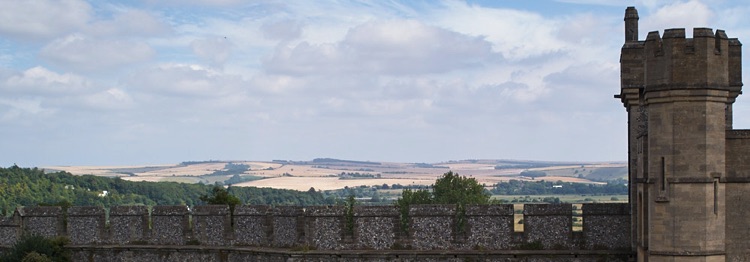1155
Year
Battle Abbey Charter
Event
Grant of the Charter
William I granted the abbey a rough circle of land surrounding the abbey, known as a leuga. Starting due east and following a clockwise direction the abbey’s land was bounded by Bathurst, Hedgland, Crowhurst, Catsfield, Puchehole, Westbece, Bodeham, Whatlington and back to Bathurst. Many of these villages still exist today. In addition to the leuga, William also granted other valuable manors to the abbey including Alciston in Sussex and Wye in Kent. Within the leuga there was a mixture of meadows for hay and crops, three mills for grinding flour and woodland to support pigs.
The Town of Battle
The town of Battle was planned and built next to the abbey. About 100 dwellings, some with workshops, were built for the craftsmen, tradesmen and farmers and who would support the abbey. Each tenant paid rent to the abbey, commonly of 7d or 8d a year, plus labor to work the fields. Such tenancies were known as messuages. When working on the fields, the workers would also receive bread and something to go with it. Amongst the tenants in the town of Battle were a cordwainer (new shoemaker), 3 cobblers (shoe repair), a leather-worker, a weaver, a brewer, 3 cooks, 3 bakers and 2 smiths. There was a hostel near the abbey where pilgrims could stay. The volume of pilgrims likely helped drive the trade for many of the towns people.
Interestingly, the Roger the Brewer did not make his own malt, so each tenant in town was required to make one seam of malt from grain that was delivered to them by the abbey. On converting the grain to malt, the tenant received 2 loaves of bread and a "good accompanying dish". This was presumably a more enjoyable meal than the “something to go with it” that the field workers received.
The majority of the towns people worked in the fields to support the abbey, but there were some more specialized roles such as the two stewards, two sacristans, a goldsmith and a bell-caster. It would be easy to speculate that one steward possibly oversaw the management of the fields and the other the daily operations of the abbey. It is unknown why there was a resident bell caster, but an important abbey, such as Battle, would have had enough treasure to require a sacristan. There was also a clerk in the town. A clerk in medieval times would have an important role in drafting and copying important documents. It is possible that Gilbert the Clerk had a role in drafting some of the Battle Abbey chronicle.
Right to Salvage
Although usually a royal prerogative, William I allowed the abbey the salvage rights on ships wrecked on the Dengemarsh shore of its Wye manor. The abbey exercised this right in 1155 when a ship with a cargo of ornaments and treasures was wrecked on the Dengemarsh shore. The crew was not able to repair the ship in the allowed time and Battle Abbey was able to claim the salvage. The abbey also had the right to beached whales and craspies (dolphins) for their meat.
Communications at this time were chiefly delivered by a messenger on horseback. A number of Battle Abbey tenants were charged with carrying message when need to the abbey. It’s likely the abbey received news of the wrecked ship, via a rider from Dengemarsh.
Challenges to the Charter
Unfortunately for the abbey, William I did not grant the abbey a written charter and an abbey such as Battle would represent a valuable source of income. The first claim against Battle came from Archbishop Stigand of Chichester, who initially insisted that Gausbert come to Chichester to be blessed as abbot. This would acknowledge the episcopal oversight of Battle by Chichester. This did not please William I, who forced Stigand to go to Battle for the blessing.
Before becoming the abbot of St Martins, Battle, Gausbert was a monk in the abbey of Marmoutier. The abbot of Marmoutier tried to make Gausbert pay homage to Marmoutier. The astute Gausbert politely declined. There were also numerous land disputes with local barons, especially during the Anarchy. In this period, King Stephen granted all of Kent, including Battle’s valuable manor at Wye, to William of Ypres, his mercenary commander.
Final Resolution
The diocese of Chichester, under Bishop Hillary again tried to assert Chichester’s episcopal rights over Battle. Unfortunately for Hillary, Walter de Luci, the abbot of Battle was well connected with Henry II court. Henry’s Justiciar (chief councilor) was abbot Walter’s brother, Richard de Luci. In the summer of 1155, Walter de Luci was able to return to the monks of Battle with a charter sealed by Henry II. Henry may also have had an interest in asserting royal authority, rather than allowing the church to decide the matter.

Sussex Timeline


